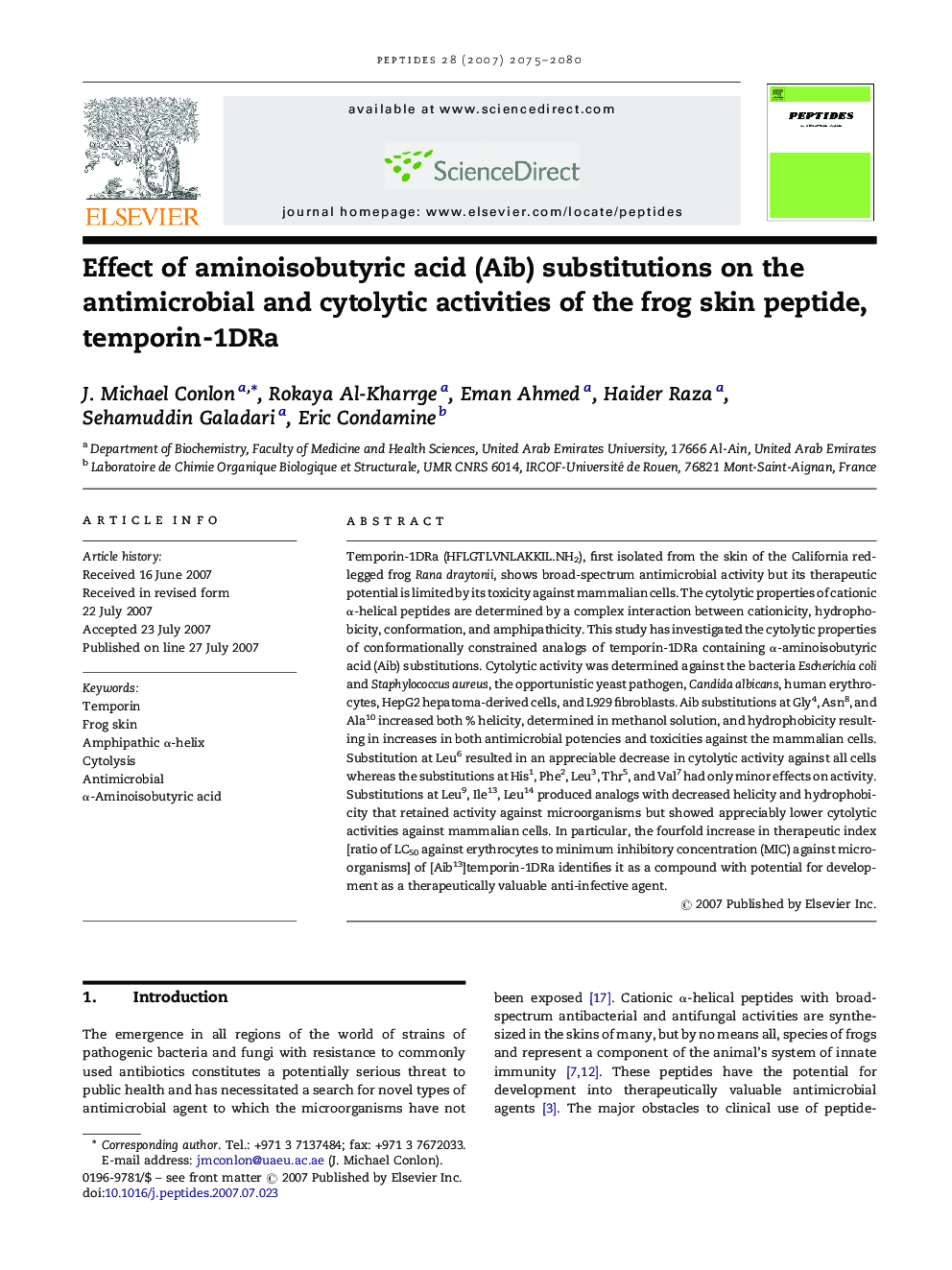| Article ID | Journal | Published Year | Pages | File Type |
|---|---|---|---|---|
| 2007715 | Peptides | 2007 | 6 Pages |
Temporin-1DRa (HFLGTLVNLAKKIL.NH2), first isolated from the skin of the California red-legged frog Rana draytonii, shows broad-spectrum antimicrobial activity but its therapeutic potential is limited by its toxicity against mammalian cells. The cytolytic properties of cationic α-helical peptides are determined by a complex interaction between cationicity, hydrophobicity, conformation, and amphipathicity. This study has investigated the cytolytic properties of conformationally constrained analogs of temporin-1DRa containing α-aminoisobutyric acid (Aib) substitutions. Cytolytic activity was determined against the bacteria Escherichia coli and Staphylococcus aureus, the opportunistic yeast pathogen, Candida albicans, human erythrocytes, HepG2 hepatoma-derived cells, and L929 fibroblasts. Aib substitutions at Gly4, Asn8, and Ala10 increased both % helicity, determined in methanol solution, and hydrophobicity resulting in increases in both antimicrobial potencies and toxicities against the mammalian cells. Substitution at Leu6 resulted in an appreciable decrease in cytolytic activity against all cells whereas the substitutions at His1, Phe2, Leu3, Thr5, and Val7 had only minor effects on activity. Substitutions at Leu9, Ile13, Leu14 produced analogs with decreased helicity and hydrophobicity that retained activity against microorganisms but showed appreciably lower cytolytic activities against mammalian cells. In particular, the fourfold increase in therapeutic index [ratio of LC50 against erythrocytes to minimum inhibitory concentration (MIC) against microorganisms] of [Aib13]temporin-1DRa identifies it as a compound with potential for development as a therapeutically valuable anti-infective agent.
